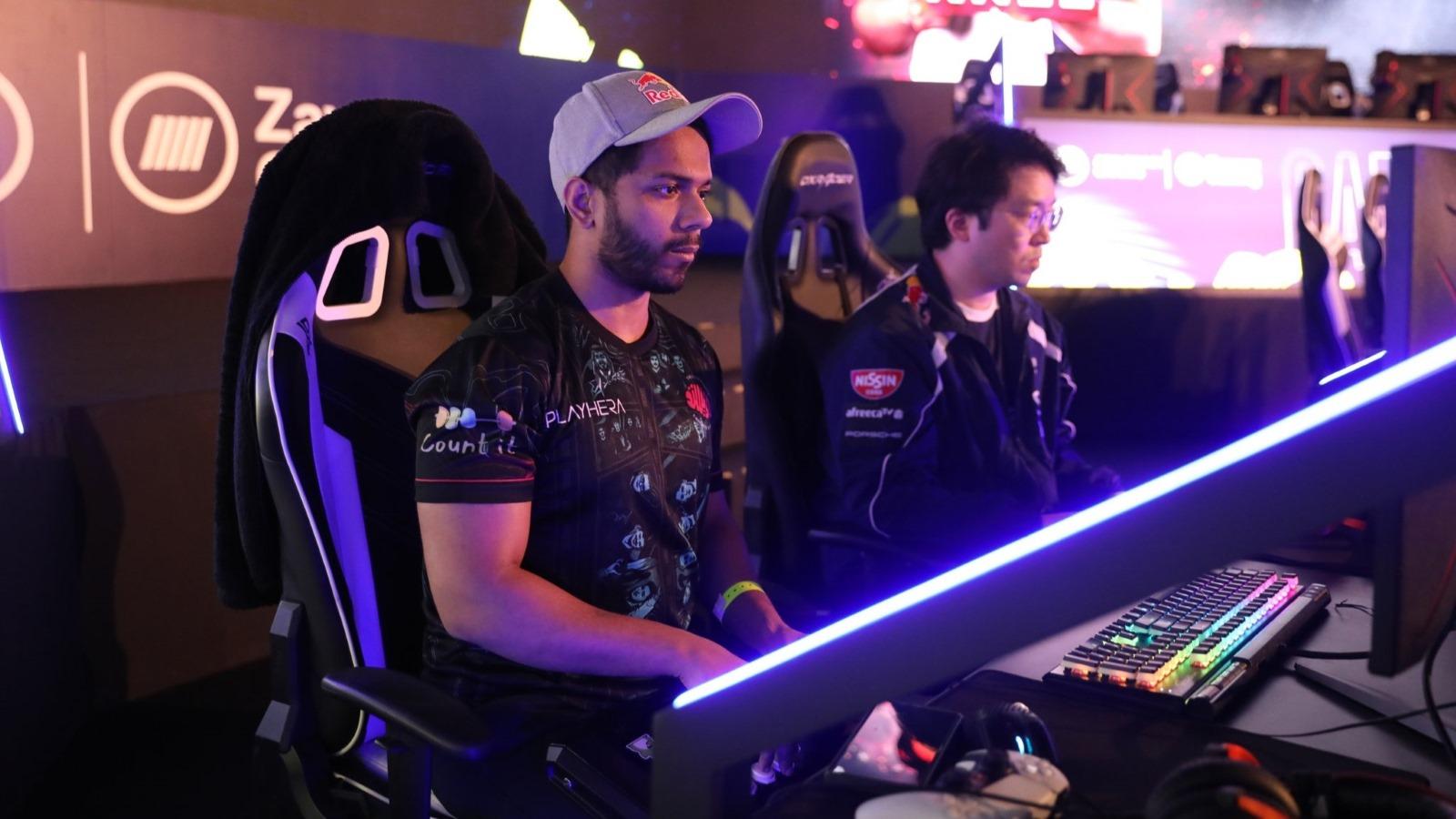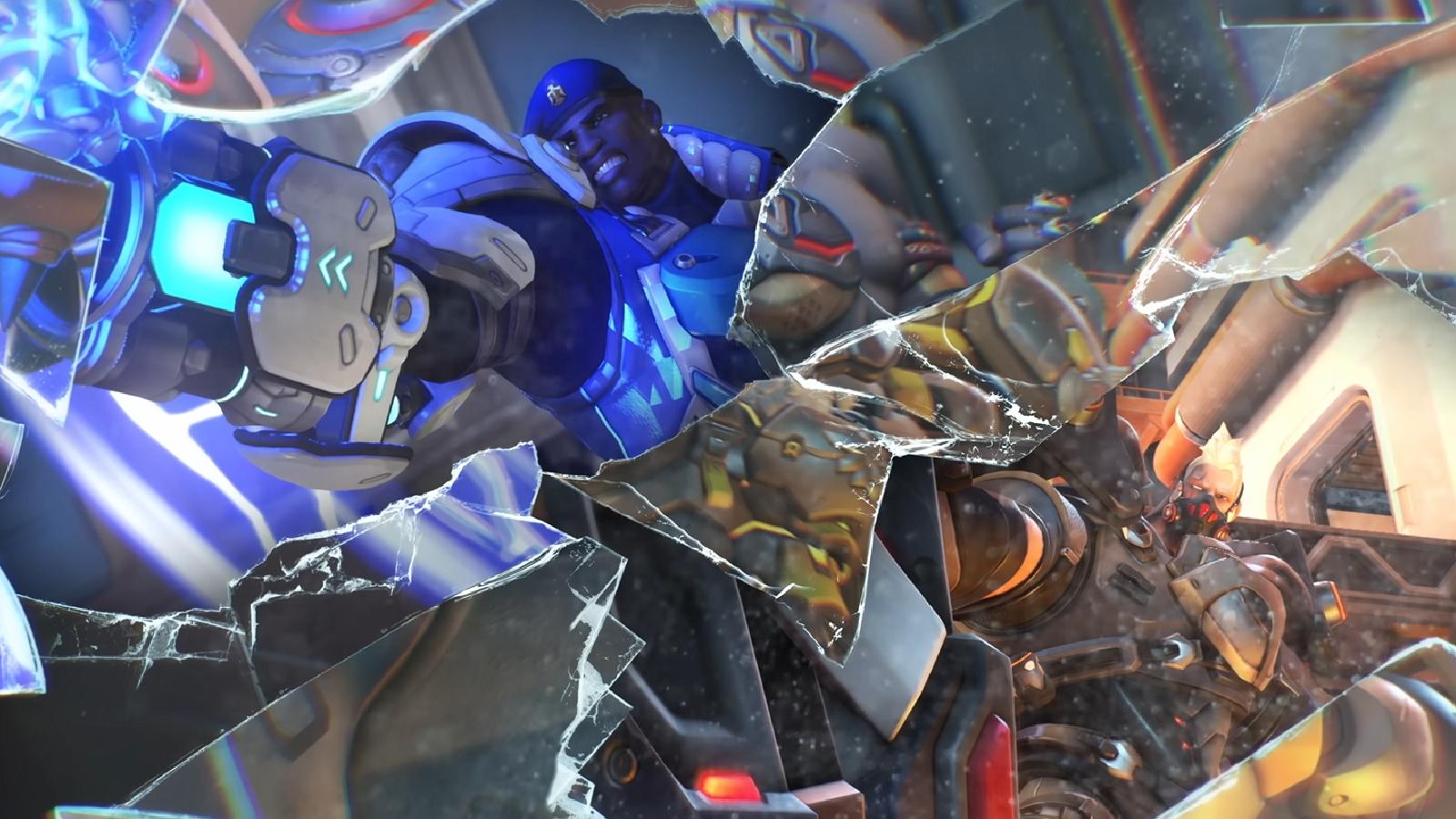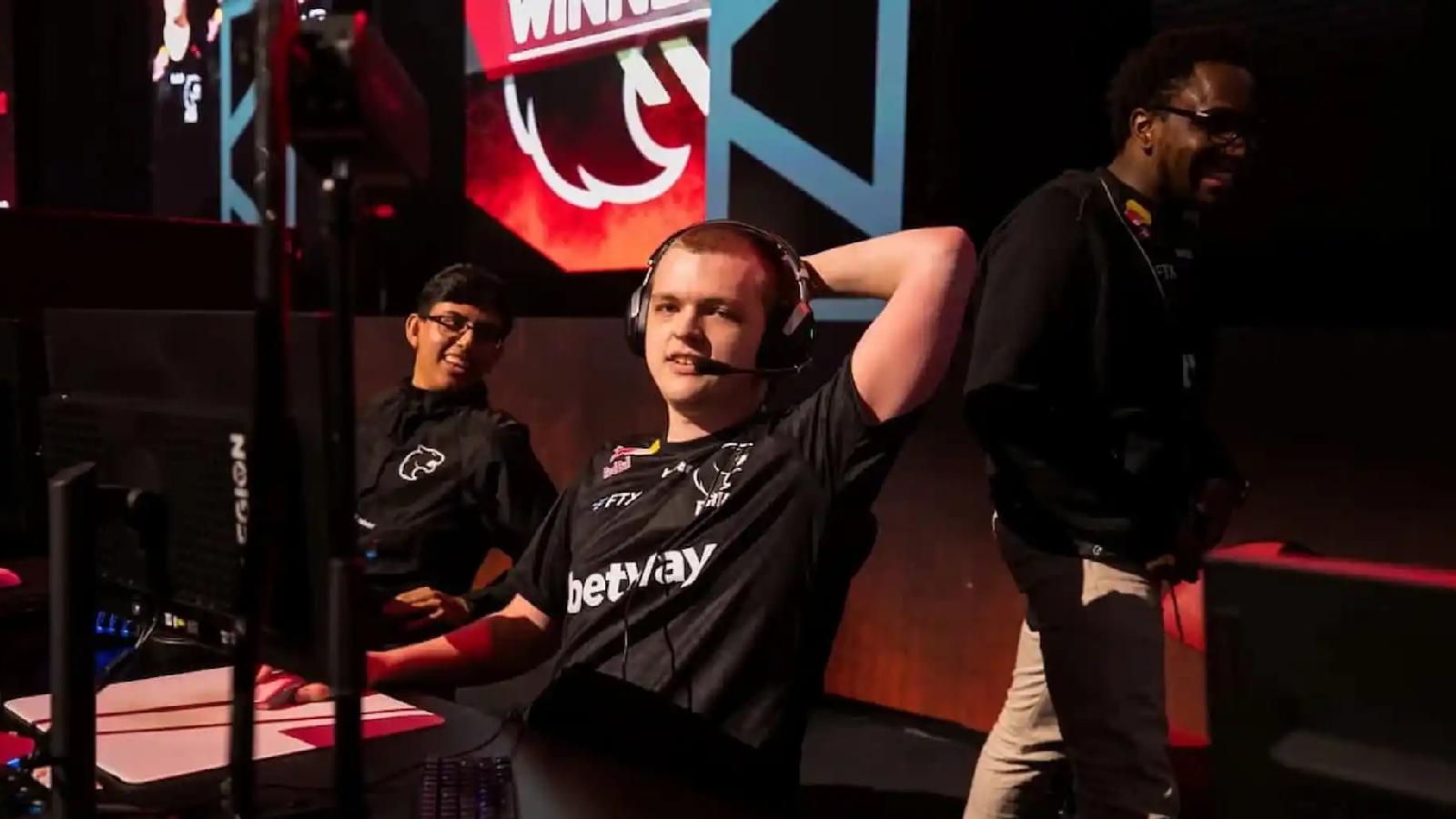Stuchiu’s Standpoint: Science, Alchemy, and Art – the crafting of CSGO teams
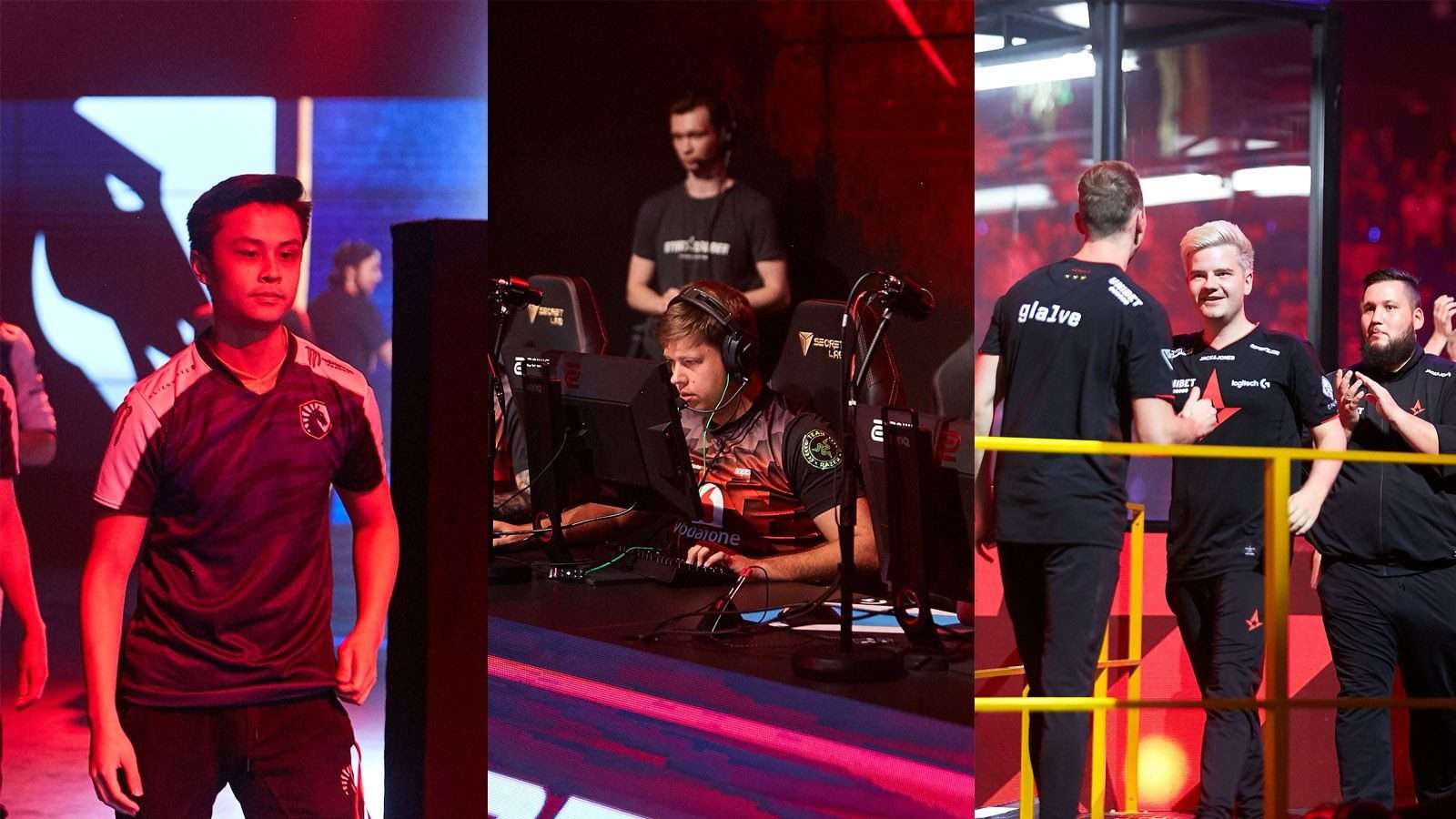 IGOR BEZBORODOV AND STARLADDER
IGOR BEZBORODOV AND STARLADDEROne of the most complex tasks in competitive CS:GO is crafting an elite team. There are multiple factors to take into consideration: individual skill, team play, chemistry, balance of personalities, and a balance of roles. With so much to consider, it is impossible to create the perfect team without trial and error. You can have the right players, but the wrong personalities. You can have the right idea, but not the right players. The crafting of a CS:GO team is at times a science, at times alchemy, and at times art.
[ad name=”article1″]
Science
Science is the systematic study of the structure and behavior of the world. In the case of CS:GO teams, it is the study of what makes a perfect lineup. Among all of the teams in the world, I believe that Team Liquid have followed this idea the closest. Since coming into the scene, they have consistently tried to pick up better and better pieces as they found them in order to create a championship contender.
- Read more: CSGO roster shuffle post-Berlin Major
The two Liquid lineups from late 2017 to 2018 best explain the scientific method. By mid 2017, the Liquid lineup was: Nicholas “nitr0” Cannella, Jonathan “EliGE” Jablonowski, Russel “Twistzz” Van Dulken, Joshua “jdm64” Marzano, Peter “stanislaw” Jarguz, and Wilton “zews” Prado as coach. On paper, this team checked nearly every theoretical role. They had three skilled riflers, one AWPer, and one in-game leader. However, for whatever reason, the roles and in-game chemistry just didn’t work.
[ad name=”article2″]
Liquid started with a hypothesis of how to create a team and when the results weren’t good enough, they tried a different formulation. After the PGL Krakow Major, they changed the roles of the lineup. Nitr0 became the new in-game leader. This freed up stanislaw so that he could play the lurker position for the squad, and this move breathed new life into the team as they got second at ESG Mykonos and ESL One New York 2017. However, the team didn’t reach the results they wanted, and they replaced stanislaw with Lucas “steel” Lopes soon after.
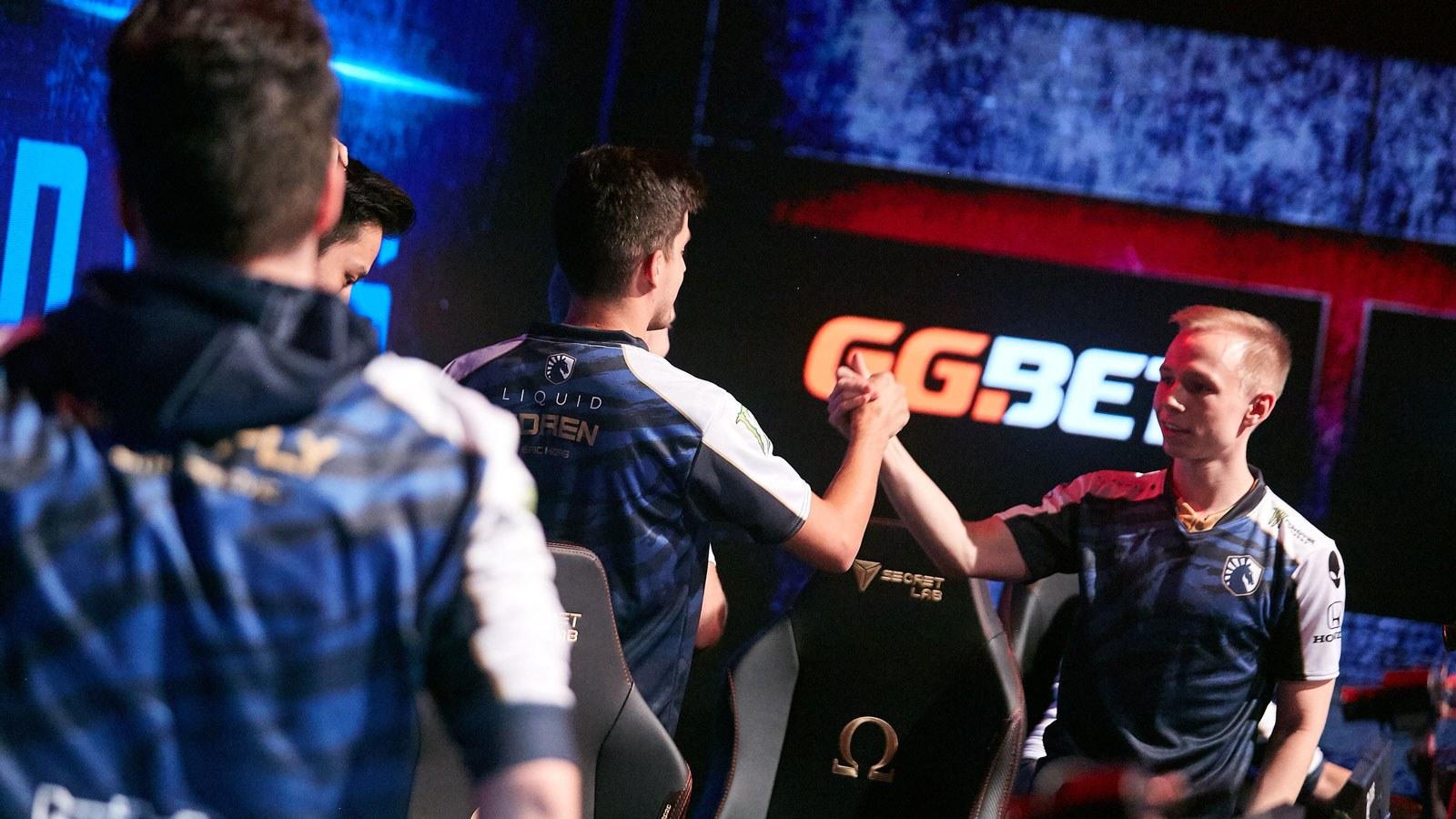 Liquid after making playoffs at StarLadder Berlin
Liquid after making playoffs at StarLadder BerlinComing into 2018, the team looked at their old hypothesis: the idea of 3 riflers, one AWPer, and one in-game leader. Looking at the field at the time, there were no world class AWPers to be had. Jdm64 was a good AWPer, but a liability on anything else. On the other side of that coin, there were multiple rising rifler players in NA, with Keith “NAF” Markovic being chief among them.
With the pieces that they had, Liquid came up with a new hypothesis. What if they ran a five rifle system as their primary modus operandi, and had players pick up the AWP when needed? This was to be their new paradigm as they removed jdm64 for NAF. The move worked and reached new levels of success after steel left the team and Liquid recruited Epitacio “TACO” de Melo. For the rest of 2018, Liquid became the second best team in the world.
[ad name=”article3″]
When looking back at that particular period of Liquid history, it’s clear that Liquid originally used a standard template of what it takes to be a top-tier team in CS:GO. When that idea stopped working, they created a new hypothesis that better utilized the players they had. In essence, Liquid constantly experimented with their lineup, continued to get better components, and repeated until they came up with a winning formula. Broadly speaking this is the most common method, though it’s efficacy depends on how willing the orgs are in spending resources to get the next best player.
[ad name=”article4″]
Alchemy
Alchemy is the predecessor to chemistry. It was the study concerned with turning base metals into gold. In the case of CS:GO, it is a study of change, of either transforming a hitherto unknown player into one of the world’s best or taking a squad with no results to a world class team.
In the study of CS:GO alchemy, the two best CS:GO leaders at the highest levels are Mathias “MSL” Lauridsen and Finn “Karrigan” Andersen. While there are leaders or veterans at the lower levels that have helped more players rise up, for me the true alchemist must be able to turn those types of players into international stars or teams.
[ad name=”article5″]
For MSL, he has done this throughout his career. From Dignitas to North, the players whose game he has helped raise include: Philip “aizy” Aistrup, Markus “Kjaerbye” Kjaerbye, Kristian “k0nfig” Wiencke, and Emil “Magisk” Rief. All of them were unpolished Danish talents before they came into his system. Aizy had his career high when he was playing with MSL on Dignitas before leaving the squad. Kjaerbye played brilliantly and continued to have a great career when he moved to Astralis. K0nfig was a top ten player in the world in 2017, but once he left MSL’s system, he dropped out of the conversation. As for Magisk, he was a world superstar from the end of 2016 to early 2017. After declining for a bit, he was removed from the team and wallowed away in exile until Astralis picked him back up and he became a world star once again.
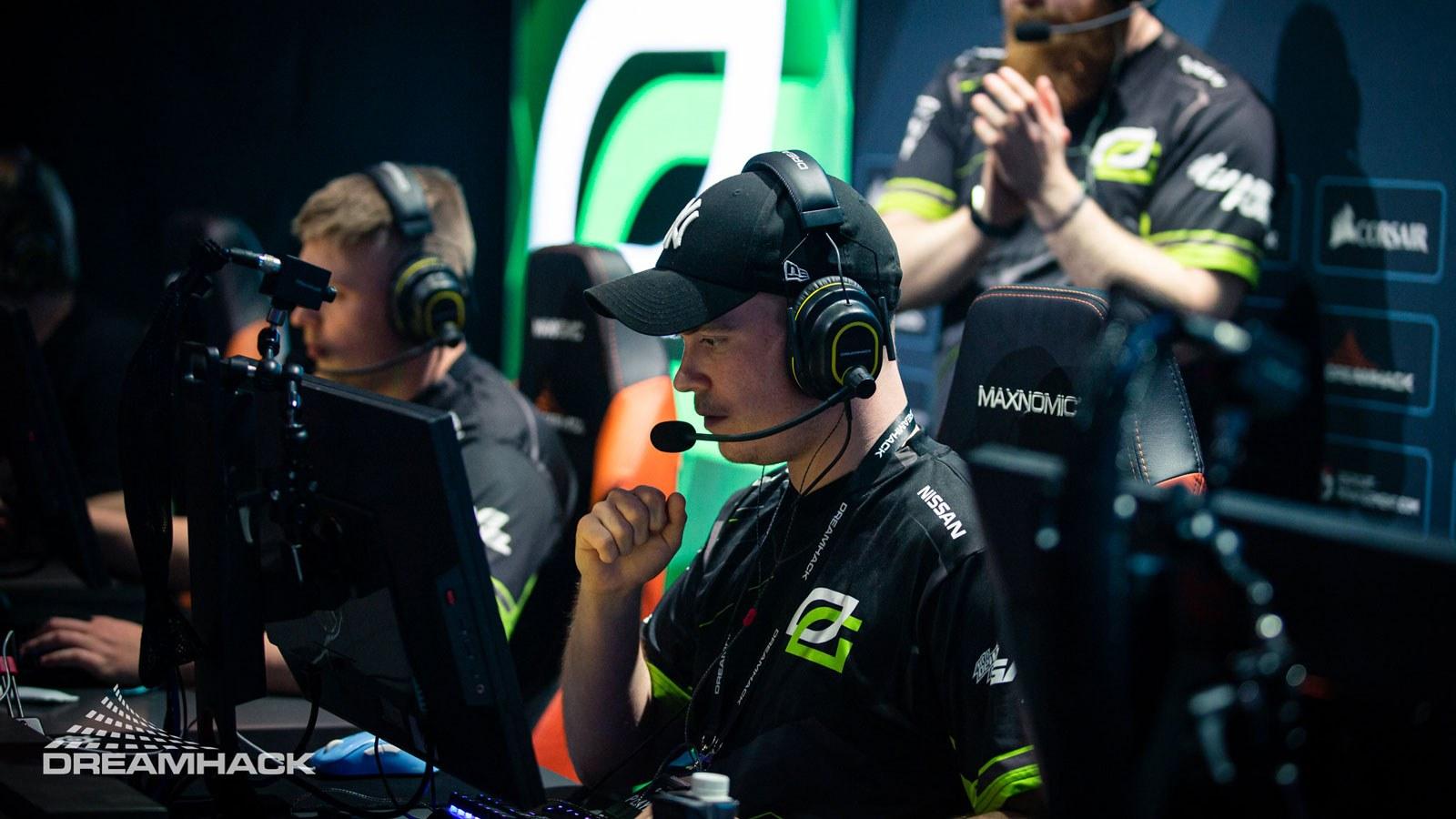 MSL leading OpTic at DreamHack Summer
MSL leading OpTic at DreamHack SummerMSL’s history as a leader has him raising these young talents with potential and taking them to the world stage. While not all of the experiments have succeeded, MSL has proven he is one of the absolute best at doing this and very few in-game leaders can boast of a resume where they took that many young talents and turned them into stars.
The other alchemist is Karrigan. Before Karrigan joined the FaZe Clan, it was a golden prison. It was an amalgamation of misfits and odd pieces. Every singular piece looked good, but when it combined together, it made you scratch your head and wonder how any of it was supposed to work. They had players like: Aizy, Havard “rain” Nygaard, Fabien “KioShiMa” Fiey, Aleski “allu” Jalli, and Joakim “jkaem” Myrbostad.
Before Karrigan, FaZe failed get out of groups through 2016. Days after he came into the lineup, they got through their ELeague Group and into the playoffs. Every lineup Karrigan has joined has instantly meshed well and hit its stride instantly as he is able to make his players better than what they were before. In this first FaZe lineup, he enabled KioShiMa jumped leaps and bounds. In the all-star iteration of FaZe, both Olof “olofmeister” Kajbjer and Ladislav “GuardiaN” Kovacs had a jump in form.
In 2019, Karrigan pulled the same maneuver again as he helped Robin “ropz” Kool, Ozgur “woxic” Eker, and David “frozen” Cernansky reach high levels of skill in their careers. The alchemists are a rare breed as they don’t need experiments to see what will happen. They have the rare ability to intuit what will happen as they know how to measure and unleash the potential of their players.
Art
We’ve gone over Liquid’s scientific methods. We’ve poured through two examples of alchemists who turned lead into gold. Now we go into the art of crafting CS:GO teams. Art is the expression of skill and imagination. When applied to CS:GO, it is the ability for a team to express each individual player’s best self while simultaneously having the sum become even greater than its parts.
This is the highest form of roster creation and one that is impossible to replicate. No amount of knowledge, demo review, or theory crafting will ever let someone know how any five man team will turn out. While we know enough to sense a general direction, no one can decipher how the roles, positions, tactics, teamplay, personalities, or individual skill will be translated into the server. We don’t know how the intangibles and inter-dependencies will work outside of the server either.
Sometimes you can get the right five players, but you also need them at the correct times in their careers. The current Liquid roster for instance only works because all five players have had enough experience to play a wide variety of roles which allows them all to fill specialty roles, but have enough flexibility to pull off an almost role-less style of CSGO.
The pinnacles of art in CS:GO are the greatest lineups of its history. Teams like Ninjas in Pyjamas, Fnatic, and Astralis are teams that fundamentally changed the scene in a way that no one could have seen coming.
Consider for a moment the last three iterations of Astralis. The lineup in 2016 had: Karrigan, Kjaerbye, Peter “Dupreeh” Rasumussen, Andreas “Xyp9x” Hojsleth, and Nicolai “dev1ce” Reedtz. This team had terrible results considering how good the lineup looked. Looking back now, we know that the internal disputes of the team were irreconcilable between Karrigan and the rest. They wanted to play a more structured style, while he wanted to play a more explosive style.
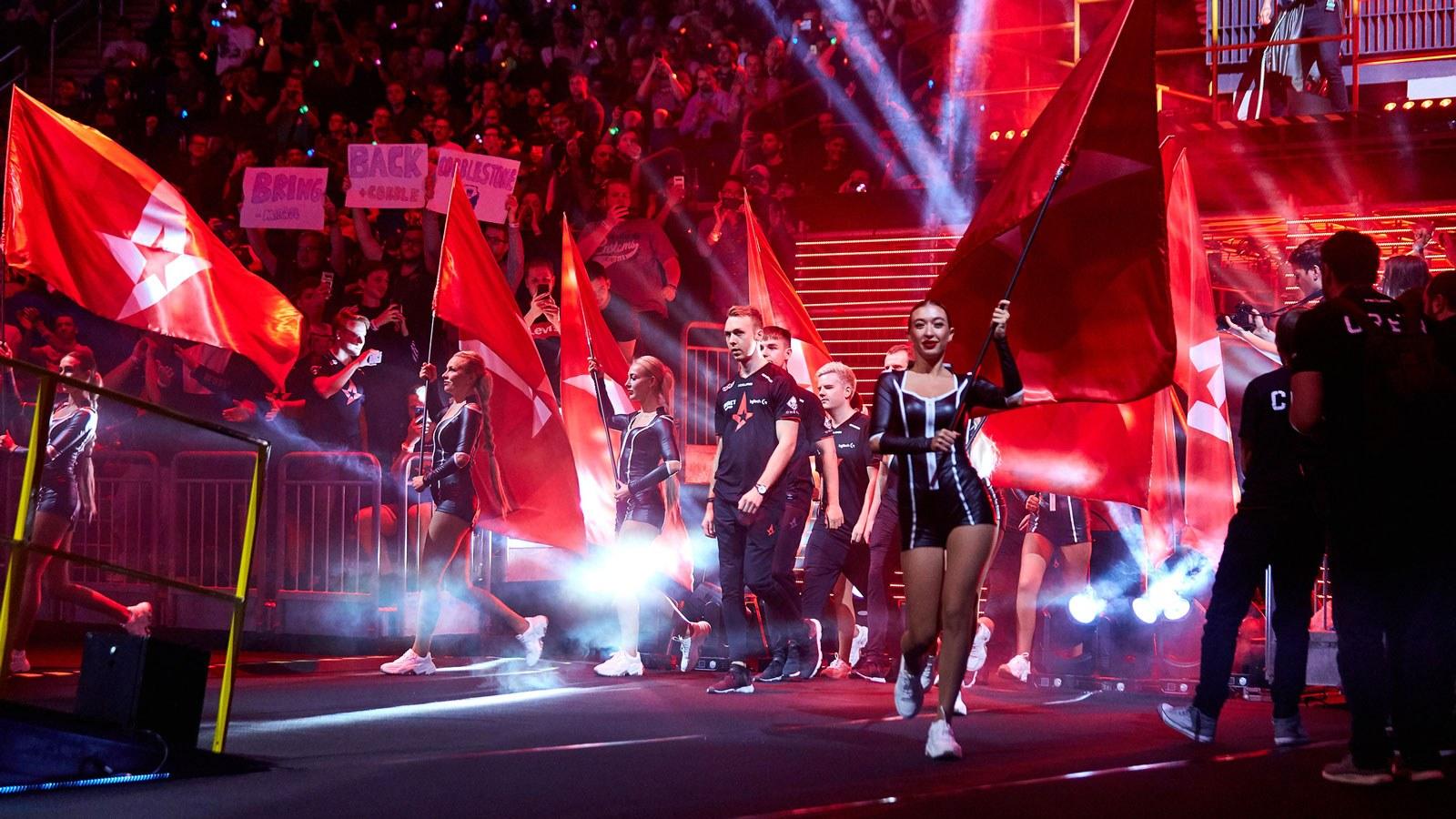 Astralis enter their quarterfinal match at StarLadder Berlin
Astralis enter their quarterfinal match at StarLadder BerlinWith such opposing ideas, the sum became less than its parts. On top of that, the individual forms were falling down and the roles weren’t working out for the team. So when Lukas “gla1ve” Rossander came into that team, many of those problems were fixed. Dupreeh became a lurker, while Kjaerbye became the entry-fragger. The structured style of gla1ve perfectly fit with the ethos of the team and with one move, the entire sum became greater than its parts. This was a Major winning lineup and one of the great reasons for its success was the approach that gla1ve took when he joined the team.
However like all teams, it broke apart. The role clash of players created a cap that they couldn’t get past. At the beginning of the lineup, Dupreeh was in a slump and could no longer play the entry role, so it was given to Kjaerbye. By mid 2017, Dupreeh had returned to form and Kjaerbye was dropping off. The two players were of a similar style, so one had to budge over the other. In addition to that, gla1ve’s roles on the CT-side didn’t suit him perfectly as he and Kjaerbye played similar spots on some maps.
With neither player able to express their greatest potential, the team was on the verge of collapse. In 2018, Kjaerbye left the lineup and Magisk joined Astralis. At the time, the roster move was thought to be a lateral move at best. Magisk had languished in OpTic and hadn’t reached the peak levels of stardom he had in North. In retrospect though, we now know he was the perfect addition and Magisk was the exact player that Astralis needed.
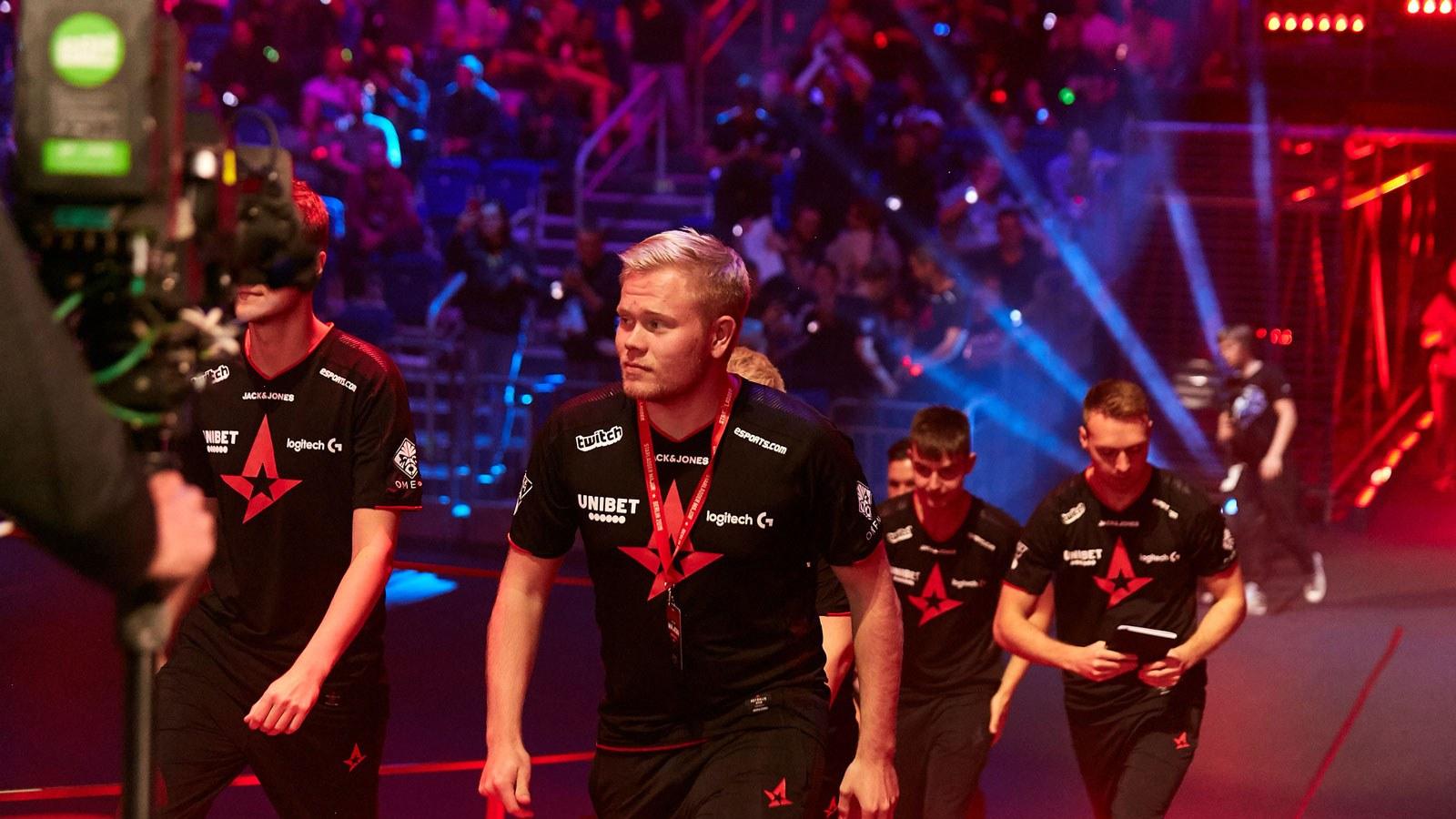 Magisk, Astralis’ most recent addition
Magisk, Astralis’ most recent additionThe reason is because Magisk’s entrance shifted roles in the team which allowed each player in the team to express their greatest strengths. This combined with the right timing of all five players hitting peak form made them unstoppable. Dev1ce and Xyp9x largely remained the same. In the case of Dupreeh, Magisk, and gla1ve, all three were able to elevate their game. Dupreeh got all of the roles that he wanted. Gla1ve was able to take star position CT-side roles as a rifler and shines in those roles. Both of those changes were only possible because Magisk naturally wanted the roles they didn’t want to play.
At the same time, their personal styles and balance of the team worked in the greater whole. Dupreeh and gla1ve are naturally more aggressive players whereas Magisk and Xyp9x are more passive. Dev1ce is a mobile AWPer, but because of the natural versatility of players of the others, this never created a problem on any side of the map. Magisk was unable to bear the load as a primary superstar player on North, but on Astralis he has found comfort in knowing that Dupreeh and dev1ce are there, and that the team as a whole can perform. The perfect balance was struck between all five players and their coach Danny “zonic” Sorensen.
The Astralis lineup is art at its highest level. They are the first team in CS:GO history to establish an era without having the world’s best player. NiP had Christopher “GeT_RiGhT” Alesund, Fnatic had olofmeister, and LG/SK had Marcelo “Coldzera” David. In Astralis’ case, they have skilled players in every role, but it is their ability to simultaneously express their own individual potentials and their ability to be even greater than the sum of their parts that has them creating their own era.
The crafting of CS:GO teams is one of the most complex tasks in the game. Many teams use science and experiments to varying success, with Liquid arguably being the most successful among them. There are leading alchemists like MSL or Karrigan who know how to transmute players into their best selves. And all teams are trying to reach that level of artistic expression that Astralis had during their era.
